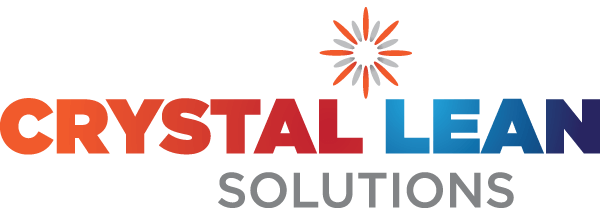What is White Belt?
Even the most effective and time-tested tools must change over time, becoming better and adapting to the realities of the market and the companies in which they are used.
Striking examples of this are Lean, Six Sigma, and indeed, the combination of the two: Lean Six Sigma. This is an innovative combination of process management methods based on Six Sigma principles, with a focus on what can be successfully used, not only in manufacturing or construction, but in any area of business.
Lean is a set of practices, tools, techniques, and a way of thinking that leads an organisation to focus on creating value and eliminating waste, so that efficiency, effectiveness, and profitability can increase. Primarily, Lean uses the PDCA (Plan-Do-Check-Act) cycle to implement smaller scale improvements on a continual basis – the relentless pursuit of perfection – a process of evolution rather than revolution.
Six Sigma is a methodology aimed at reducing variation in the processes undertaken by an organisation. Six Sigma utilises the DMAIC (Define-Analyse-Measure-Improve-Control) approach, with an emphasis on the use of statistical techniques.
Lean Six Sigma then is the use of both sets of tools and techniques to bring about improvements through reduction in variation and waste to bring additional value to the customer.
Lean Six Sigma methodology is a solution for those who are used to using the best practices, getting the result already when other market participants are still thinking about the expediency of implementing a particular methodology. As practice shows, this concept is adopted by high-level specialists, achieving impressive growth rates, regardless of initial conditions.
What are the Lean Six Sigma Belts?
In the improvement and optimisation of an organisation, business and production, as in the martial arts, there is a gradation of the level of training of the fighter. This is the belt system. It was originally adopted within Six Sigma to delineate the different ‘levels’ of expertise of practitioners, based on a similar principle to that seen traditional martial arts. A performer’s role depends on their belt.
The approach of using belts to indicate various levels of expertise has since migrated from Six Sigma and can be seen too in Lean. Typically, we see White, Yellow, Green, and Black Belts. In six Sigma, they also have Master Black Belts.
White Belts have been trained in the foundations of Lean. They will have a basic knowledge of the Lean Principles and will be able to differentiate between Value and Waste. A good organisational approach is to provide White Belt training across the organisation so that all employees use the same language and have the same understanding of the continuous improvement approach.
White Belt training typically takes 3-4 hours.
Yellow Belts will have completed training that develops their understanding of the Lean Principles and introduces some foundational Lean Tools such as 5S and the 8 Wastes. Typically, training at Yellow Belt will include the completion of a small-scale problem-solving project within the trainee’s workplace.
Yellow Belt training programmes typically involve 2 days of classroom training, with a few weeks working on a project once the training is complete.
Green Belts are trained to run improvement projects utilising both Lean and Six Sigma tools, to deliver benefits across the organisation. Training will include the completion of a project and may also include completion of an exam.
Green Belt programmes will usually take at least 5 days of classroom training with an in-class assessment or exam, followed by several weeks working on an improvement project.
Black Belts operate at a higher level in the organisation and typically provide support and mentoring to Green Belts, as well as managing their own run larger-scale projects delivering significant improvements in terms of customer value and cost reduction.
Black Belt programmes will typically take place over several sessions, each lasting 2-3 days, with an exam upon completion, followed by a higher-level project.
About White Belt
Lean White Belt is the underlying level of certification that offers you understanding about basic ideas of Lean. White Belts not only contribute to organisational change inside a company, but they can also engage on local issue solving teams that support initiatives.
So, the first phase of Lean training is the White Belt. Here you will learn how to:
- Define customer needs
- Identify waste and provide suggestions for reducing or eliminating it
- Identify problems and help to provide solutions
White Belts are appropriate for:
- Anyone who wishes to introduce Lean methods in their business
- Individuals that are interested in learning about fundamental Lean ideas
- Those who are interested in learning more about Value and Waste
- Anyone wishing to develop the foundational skills to progress through the various levels of skill and knowledge to bring about lasting improvements in their workplace, in any industry or sector.
How CLS can help
At Crystal Lean Solutions, we recognise the cost competitive pressures of Irish based organisations operating within markets that will not stand still. We offer a flexible, yet innovative, approach to Lean deployment with real energy and enthusiasm for your future.
Our 3-hour White Belt training programme is designed to provide participants with an introduction to the fundamentals of Lean and Lean in Construction, and to enable construction personnel to speak the same Lean language onsite and in the office.
This LCi Lean White Belt course introduces participants to Lean Thinking and the benefits of using Lean in Construction, while also introducing customer values and eyes for waste.
In Summary
The White Belt is crucial to establishing continuous improvement in a company. The employee’s introduction to the Lean culture of continuous improvement begins with this belt. Being certified will boost your earning potential and expand your employment options because it is such a sought-after certification. Lean White Belt training is an ideal primer for those simply looking to understand what Lean is. It works best for employees who are unfamiliar with Lean and want to learn more about the methodology and how it can impact an organisation.

